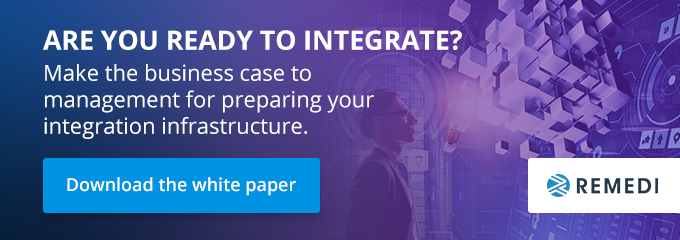
Despite being more than six decades old, EDI has remained the foundational model of electronic business-to-business integration. The widespread adoption of EDI standards has enabled trading partners across various industries to communicate and exchange documents through pre-determined and pre-aligned digital formats and protocols. With EDI, enterprises have created ecosystems where data flows seamlessly from one end to another, accelerating transactions and minimizing errors in business-critical processes.
However, thanks to rapid digitization, B2B communication models, document types, security protocols, and other requirements are evolving, testing the limits of legacy EDI middleware and tools. Consequently, businesses are encountering unprecedented EDI problems as incumbent solutions increasingly fail to meet their needs.
Fortunately, the EDI space has largely kept up with these changes. Modern EDI platforms enable businesses to automate numerous new types of partner interactions and improve the accuracy, quality, speed, and cost of transactions.
In this article, we explore modern EDI’s benefits to B2B interactions and share four reasonable options for upgrading your current system.
Benefits of Modern EDI Integration
EDI is vastly different from what it was a decade or two ago. When many companies last invested in EDI solutions, they were not facing the same challenges they currently encounter, nor did they have access to the same technologies. Today, enterprises must support new EDI methods to survive and thrive in a severely disrupted and digitized business landscape.
Modern EDI addresses the requirements of current partner, application, and service integration by providing the necessary updates to data connections in end-to-end business processes. It also simplifies EDI configuration and management by enabling IT personnel to update integrations and onboard new partners using user-friendly techniques like visual modeling, object reuse, and template-driven specification instead of coding.
For business users, modern EDI works with advanced analytics and visualization solutions to provide direct access to data and insights through intuitive and secure dashboards, email notifications, and newsletters.
Overall, modernizing EDI enables your enterprise to automate a vast range of partner interactions and benefit from faster, cheaper, more accurate, and high-quality transactions. With a modern EDI upgrade, you can get the flexibility to connect with your partners on their own terms and the visibility and control to respond to risks before they become problems.
“Organizations that implement modernized B2B integration stand to gain a 335% ROI or more than $4 in benefits per $1 invested.”-IDC Research
Four Solutions for Modernizing EDI
Choosing the right EDI modernization option demands the consideration of several indispensable factors. These include your legacy and modern EDI requirements, number of partners, in-house skill levels, and sourcing preferences.
Below are four main modernization approaches to consider:
- Handle Exceptions Manually and Modernize Later
If your enterprise is not in dire need of an EDI upgrade and only a few transactions are manual, postponing holistic modernization can make business sense. However, in addition to being occasional bottlenecks, those manual processes can quickly become a costly trap. As transactions increase, manual processing creates errors and delays that inflate operational costs, undermine partner relations, and jeopardize customer satisfaction.
- Add Point Tools, Coded Extensions, Or Services
In some cases, leaving your legacy EDI platform in place and introducing new features can be an effective strategy for modernizing EDI. If needed functionalities are available as addons from your current EDI provider, you can license them to gain modern EDI capabilities without severely denting your budget.
However, deploying legacy and modern EDI applications together can undermine some capabilities. Managing integration activities with different solutions can also reduce your IT team’s visibility and control and substantially increase maintenance costs.
- Outsource
Outsourcing integration efforts to a third-party vendor is another possible path to modernizing EDI. Integration-as-a-Service is particularly suitable for enterprises that lack the necessary resources or skills to deploy an EDI upgrade or the flexibility to redirect personnel to an EDI project.
The primary benefit of outsourcing is it frees up in-house resources for other activities that directly impact your bottom line. On the other hand, opting for a third-party to implement and manage your modern EDI platform can mean trading off flexibility and control. Integration can also take up significantly more time and resources if the provider is not conversant with your current EDI infrastructure.
- Replace Your Legacy EDI Software with A “Modern EDI” Software Solution
Modern EDI integration does not nullify legacy EDI requirements. Instead, it includes them within a framework that supports a broader range of connections, document formats, and processing options. Therefore, migrating to a modern EDI solution is the only reliable way to effectively address your EDI requirements without compromising flexibility, visibility, and control.
Holistic EDI modernization provides all EDI-related operations and services on one platform. Therefore, it offers a consistent approach to addressing current and emerging B2B integration requirements, resulting in faster transactions, better visibility and manageability, and reduced costs.
Remedi Can Help You Modernize Your EDI infrastructure
Although you can choose to postpone an EDI update and handle exceptions manually or save costs by retaining your legacy system and licensing some addons, you will only be delaying the inevitable. Migrating your existing EDI assets to a modern platform or an Integration-as-a-Service solution is the most reasonable approach to gain full modernization capabilities and benefits.
Want to benefit from modern EDI integration? Take the first step by contacting a Remedi expert today.



